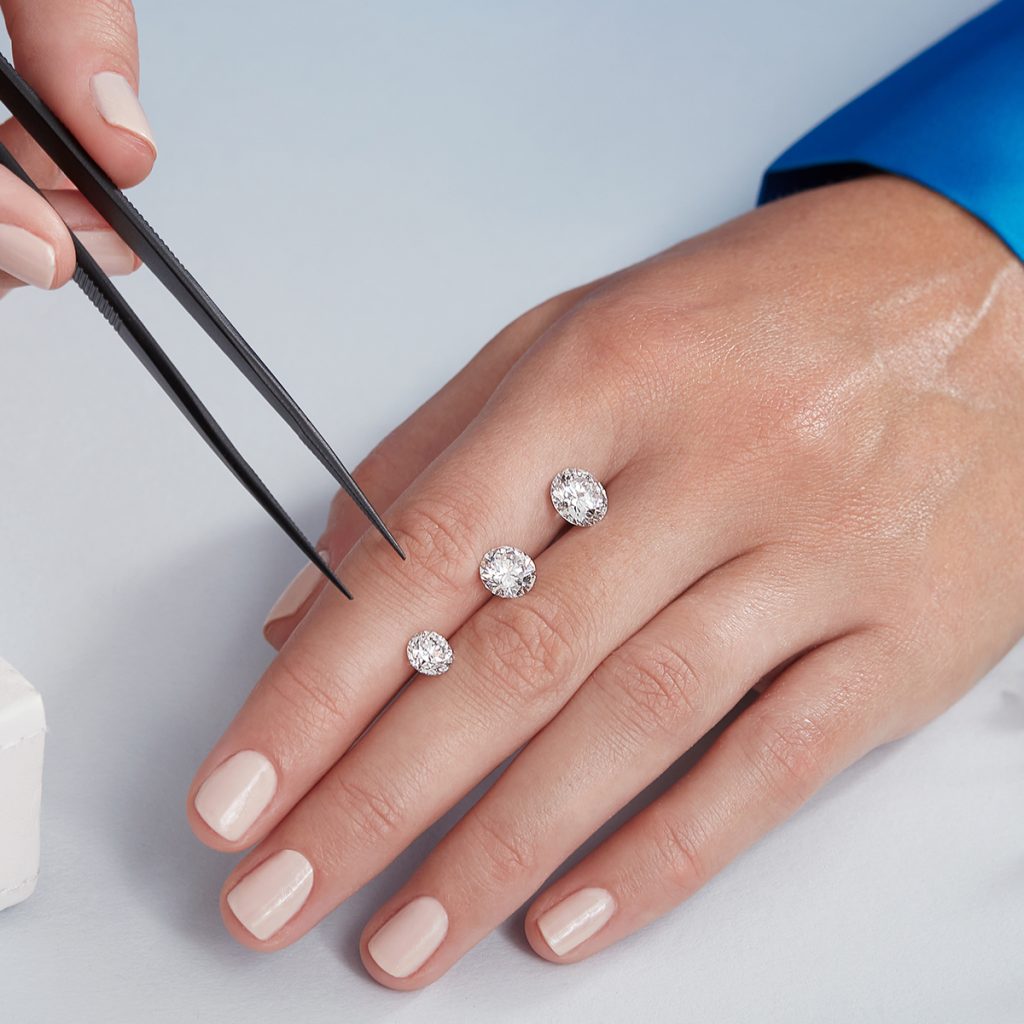In recent years, lab grown diamonds have emerged as a popular alternative to mined diamonds, offering consumers a sustainable, ethical, and cost-effective option for fine jewelry, including engagement rings. With technological developments and heightened awareness among consumers, lab grown diamonds have gained recognition for their purity, quality, and environmental benefits.

In this comprehensive guide, we’ll take a closer look at lab grown diamonds, exploring their production process, characteristics, and suitability for engagement rings.
Understanding Lab Grown Diamonds
Diamonds created in laboratories, sometimes known as synthetic or cultured diamonds, are produced using cutting-edge technical procedures that mimic the natural circumstances found in the earth’s mantle where diamonds develop. The chemical and visual characteristics of these diamonds are the same as mined diamonds, making them indistinguishable to the naked eye. Here’s what you need to know about lab grown diamonds:
Production Process:
The two main techniques used to create lab grown diamonds are Chemical Vapor Deposition (CVD) and High Pressure-High Temperature (HPHT). In the HPHT method, a diamond seed is subjected to high pressure and temperature to stimulate diamond growth. In the CVD method, carbon atoms are deposited onto a substrate to form diamond crystals layer by layer. Both methods yield high-quality diamonds with identical properties to mined diamonds.
Characteristics:
Diamonds created in laboratories have the same physical, chemical, and visual characteristics as diamonds that are mined, including their fire, brilliance, and hardness. They are composed of pure carbon arranged in a crystalline structure, with no discernible differences in appearance or performance compared to natural diamonds.
Environmental Impact:
The fact that lab grown diamonds have less environmental impact is one of their main benefits. Unlike traditional diamond mining, which involves extensive land disruption, habitat destruction, and carbon emissions, lab grown diamond production is more sustainable and eco-friendly. It requires significantly less energy and water, produces fewer greenhouse gas emissions, and avoids the negative social and environmental consequences associated with mining.
Purity and Quality of Lab Grown Diamonds
When it comes to purity and quality, lab grown diamonds are held to the same rigorous standards as mined diamonds. Here’s why lab grown diamonds are renowned for their purity and quality:
Traceability:
Lab grown diamonds offer unparalleled traceability throughout the production process, from seed to finished gemstone. Each diamond is carefully monitored and documented at every stage of production, ensuring transparency and accountability in the supply chain.
Consistency:
Lab grown diamond rings exhibit exceptional consistency in terms of color, clarity, and cut. Unlike mined diamonds, which can vary in quality and appearance due to natural variations in the earth’s crust, lab created engagement rings are produced under controlled conditions, resulting in uniformity and consistency across batches.
Certification:
Reputable gemological laboratories, like the Gemological Institute of America (GIA) or the International Gemological Institute (IGI), certify lab grown diamonds to verify their quality and authenticity. These certifications assure consumers that their lab grown diamond meets the same standards of excellence as mined diamonds.
Lab Diamond Engagement Rings: A Sustainable Choice
For couples seeking an ethical and sustainable option for their engagement ring, lab diamond engagement rings offer an attractive alternative. Here are some reasons why these rings are gaining popularity:
Ethical Sourcing:
Lab grown diamonds are ethically sourced and conflict-free, eliminating the risk of supporting unethical practices. Couples can feel secure in their purchase knowing that their engagement ring is made in accordance with their principles and beliefs if they choose a lab grown diamond.
Environmental Responsibility:
Lab grown diamond production has a significantly lower environmental impact than traditional diamond mining. By selecting a laboratory-grown engagement ring with diamonds, couples can minimize their ecological footprint and contribute to a more sustainable future for our planet.
Affordability:
In general, lab grown diamonds cost less than those that are extracted from mines, offering couples the opportunity to purchase a larger or higher-quality diamond within their budget. With lab created engagement rings, couples don’t have to overspend to appreciate a diamond’s beauty and brightness.
Conclusion: Embracing the Future of Diamonds
Lab grown diamonds represent the future of fine jewelry, offering purity, quality, and sustainability without compromise. With their identical properties to mined diamonds, minimal environmental impact, and ethical sourcing, lab grown diamond rings are an appealing option for engagement rings for women and men.